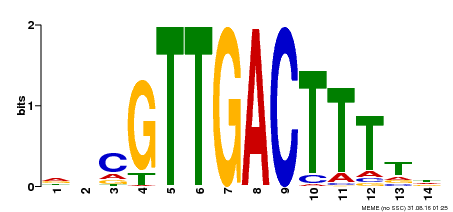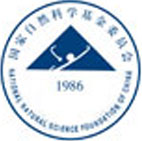- Eulgem T,Rushton PJ,Robatzek S,Somssich IE
The WRKY superfamily of plant transcription factors.
Trends Plant Sci., 2000. 5(5): p. 199-206
[PMID:10785665] - Riechmann JL, et al.
Arabidopsis transcription factors: genome-wide comparative analysis among eukaryotes.
Science, 2000. 290(5499): p. 2105-10
[PMID:11118137] - Robatzek S,Somssich IE
A new member of the Arabidopsis WRKY transcription factor family, AtWRKY6, is associated with both senescence- and defence-related processes.
Plant J., 2001. 28(2): p. 123-33
[PMID:11722756] - Haas BJ, et al.
Full-length messenger RNA sequences greatly improve genome annotation.
Genome Biol., 2002. 3(6): p. RESEARCH0029
[PMID:12093376] - Gutierrez RA,Ewing RM,Cherry JM,Green PJ
Identification of unstable transcripts in Arabidopsis by cDNA microarray analysis: rapid decay is associated with a group of touch- and specific clock-controlled genes.
Proc. Natl. Acad. Sci. U.S.A., 2002. 99(17): p. 11513-8
[PMID:12167669] - Yamada K, et al.
Empirical analysis of transcriptional activity in the Arabidopsis genome.
Science, 2003. 302(5646): p. 842-6
[PMID:14593172] - Navarro L, et al.
The transcriptional innate immune response to flg22. Interplay and overlap with Avr gene-dependent defense responses and bacterial pathogenesis.
Plant Physiol., 2004. 135(2): p. 1113-28
[PMID:15181213] - De Paepe A,Vuylsteke M,Van Hummelen P,Zabeau M,Van Der Straeten D
Transcriptional profiling by cDNA-AFLP and microarray analysis reveals novel insights into the early response to ethylene in Arabidopsis.
Plant J., 2004. 39(4): p. 537-59
[PMID:15272873] - Lu Y,Zhu J,Liu P
A two-step strategy for detecting differential gene expression in cDNA microarray data.
Curr. Genet., 2005. 47(2): p. 121-31
[PMID:15688252] - Park CY, et al.
WRKY group IId transcription factors interact with calmodulin.
FEBS Lett., 2005. 579(6): p. 1545-50
[PMID:15733871] - Thilmony R,Underwood W,He SY
Genome-wide transcriptional analysis of the Arabidopsis thaliana interaction with the plant pathogen Pseudomonas syringae pv. tomato DC3000 and the human pathogen Escherichia coli O157:H7.
Plant J., 2006. 46(1): p. 34-53
[PMID:16553894] - Journot-Catalino N,Somssich IE,Roby D,Kroj T
The transcription factors WRKY11 and WRKY17 act as negative regulators of basal resistance in Arabidopsis thaliana.
Plant Cell, 2006. 18(11): p. 3289-302
[PMID:17114354] - Ma S,Bohnert HJ
Integration of Arabidopsis thaliana stress-related transcript profiles, promoter structures, and cell-specific expression.
Genome Biol., 2007. 8(4): p. R49
[PMID:17408486] - Zhang Z, et al.
Dual regulation role of GH3.5 in salicylic acid and auxin signaling during Arabidopsis-Pseudomonas syringae interaction.
Plant Physiol., 2007. 145(2): p. 450-64
[PMID:17704230] - Libault M,Wan J,Czechowski T,Udvardi M,Stacey G
Identification of 118 Arabidopsis transcription factor and 30 ubiquitin-ligase genes responding to chitin, a plant-defense elicitor.
Mol. Plant Microbe Interact., 2007. 20(8): p. 900-11
[PMID:17722694] - Ciolkowski I,Wanke D,Birkenbihl RP,Somssich IE
Studies on DNA-binding selectivity of WRKY transcription factors lend structural clues into WRKY-domain function.
Plant Mol. Biol., 2008. 68(1-2): p. 81-92
[PMID:18523729] - Huang D,Wu W,Abrams SR,Cutler AJ
The relationship of drought-related gene expression in Arabidopsis thaliana to hormonal and environmental factors.
J. Exp. Bot., 2008. 59(11): p. 2991-3007
[PMID:18552355] - Liu H, et al.
Ectopic expression of a grapevine transcription factor VvWRKY11 contributes to osmotic stress tolerance in Arabidopsis.
Mol. Biol. Rep., 2011. 38(1): p. 417-27
[PMID:20354906] - Brand LH,Kirchler T,Hummel S,Chaban C,Wanke D
DPI-ELISA: a fast and versatile method to specify the binding of plant transcription factors to DNA in vitro.
Plant Methods, 2010. 6: p. 25
[PMID:21108821] - Arabidopsis Interactome Mapping Consortium
Evidence for network evolution in an Arabidopsis interactome map.
Science, 2011. 333(6042): p. 601-7
[PMID:21798944] - Brand LH, et al.
Screening for protein-DNA interactions by automatable DNA-protein interaction ELISA.
PLoS ONE, 2013. 8(10): p. e75177
[PMID:24146751] - Ding Y, et al.
Four distinct types of dehydration stress memory genes in Arabidopsis thaliana.
BMC Plant Biol., 2013. 13: p. 229
[PMID:24377444] - Ali MA,Wieczorek K,Kreil DP,Bohlmann H
The beet cyst nematode Heterodera schachtii modulates the expression of WRKY transcription factors in syncytia to favour its development in Arabidopsis roots.
PLoS ONE, 2014. 9(7): p. e102360
[PMID:25033038] - Jin J, et al.
An Arabidopsis Transcriptional Regulatory Map Reveals Distinct Functional and Evolutionary Features of Novel Transcription Factors.
Mol. Biol. Evol., 2015. 32(7): p. 1767-73
[PMID:25750178] - Jiang CH, et al.
Transcription factors WRKY70 and WRKY11 served as regulators in rhizobacterium Bacillus cereus AR156-induced systemic resistance to Pseudomonas syringae pv. tomato DC3000 in Arabidopsis.
J. Exp. Bot., 2016. 67(1): p. 157-74
[PMID:26433201] - Ali MA, et al.
Transcription factors WRKY11 and WRKY17 are involved in abiotic stress responses in Arabidopsis.
J. Plant Physiol., 2018. 226: p. 12-21
[PMID:29689430]
|





